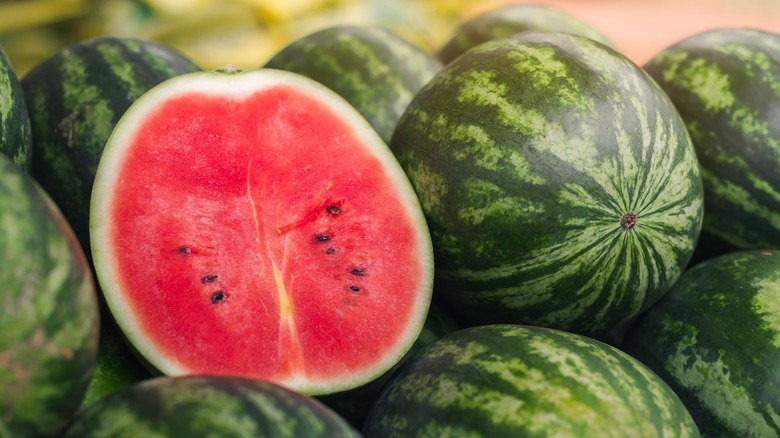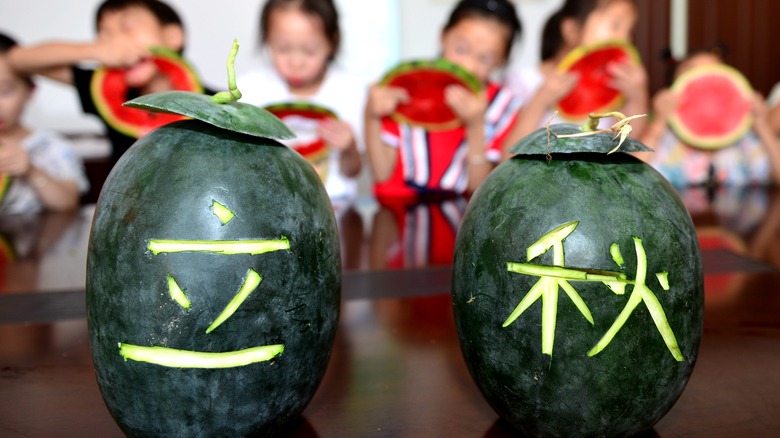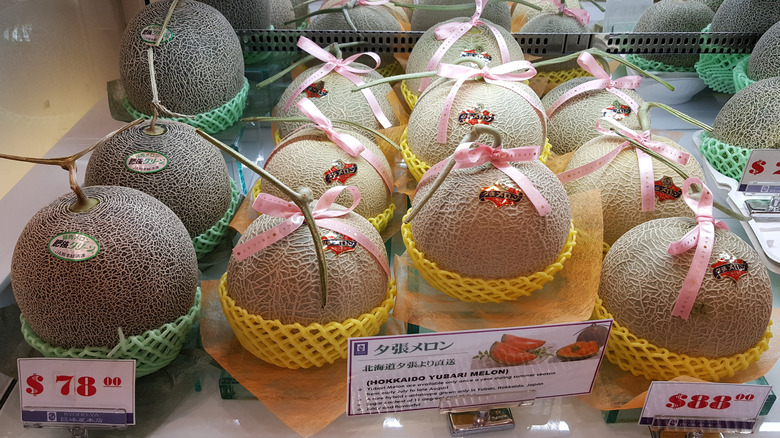Why Watermelons Are So Significant In China
Watermelon are well known for their hydrating properties. They're one of the best foods to eat on a hot day not only for their refreshing taste, but also because they can help you to stay hydrated. Watermelons also serve an additional role in China, however. While they're enjoyed just as much during the Summer, they are also one of the most common gifts when visiting someone's home.
The art of gift giving in China is referred to as "sòng lǐ", and encompasses a broad range of social etiquette surrounding the practice. Fruit is one of the most common gifts to give a host to show gratitude that you were invited into their home. Not all fruit is a welcome gift, though. Pears are considered a poor gift because the Chinese word for "pear" sounds too similar to the word for "parting."
Knowing to avoid faux pas like this is just one aspect of Chinese gift giving culture, but watermelons are a safe bet to thank hosts, when visiting the elderly, and when visiting someone sick in the hospital. This is mostly due to their known health benefits, but also because watermelon is seen as a luxury due to its former scarcity in China.
History of watermelons in China
Today, China produces the most watermelon in the world, but this wasn't always the case. Watermelon isn't even native to China: it actually originates in the desert regions of South Africa, where it was prized as a means to safely transport water supplies during long journeys. The fruit was then imported to the Northern hemisphere by way of Egypt, where the fruit was a popular domestic crop. It then spread throughout the rest of the world, including China.
It's likely that the first seeds were brought to Beijing and cultivated by the Chinese peoples around the time of The Five Dynasties (907-960 A.D.). At the time, watermelon was a strictly aristocratic food enjoyed only by those rich or powerful enough to get their own watermelons. Throughout the following dynasties, watermelon would be a common delicacy of the Chinese courts.
Since then watermelon has become a common treat, and watermelon stands have become a common sight in towns like Beijing. In the summer of 1985, it was recorded that the average Beijing citizen ate 30 kg of this beloved fruit. Today, other fruits that are considered more exotic, like cherries, have surpassed watermelon — and other traditional fruit gifts like apples or oranges — as the prestige gift. That being said, these old standbys are still considered a reliable gift in many situations.
Asian luxury fruit markets
Japan has a similar tradition of giving fruits as gifts, though it has now expanded into a market for luxury fruits. Melons that cost upwards of $100 can be found at some specialty markets, though the most sought after offerings can sell for thousands of dollars. These high-quality fruits are coveted for their wonderful flavor and nearly perfect visual presentation.
The exact appeal of these luxury gifts changes depending on the fruit. For those that cultivate these expensive fruits, it may be about creating a cluster of perfectly even spheres of grapes, or about getting a strawberry to grow in the "ideal" strawberry shape. In the case of watermelons, plastic molds are also used to coax them into growing into unnatural shapes. At luxury fruit markets, it's possible to find watermelons shaped like pyramids, cubes, and even hearts.
These luxury watermelons are then used as unique, prestigious gifts that still follow the tradition of giving fruit. However, they also add a cost to it that would make it a more appropriate gift for business clients and other costly social ventures.


